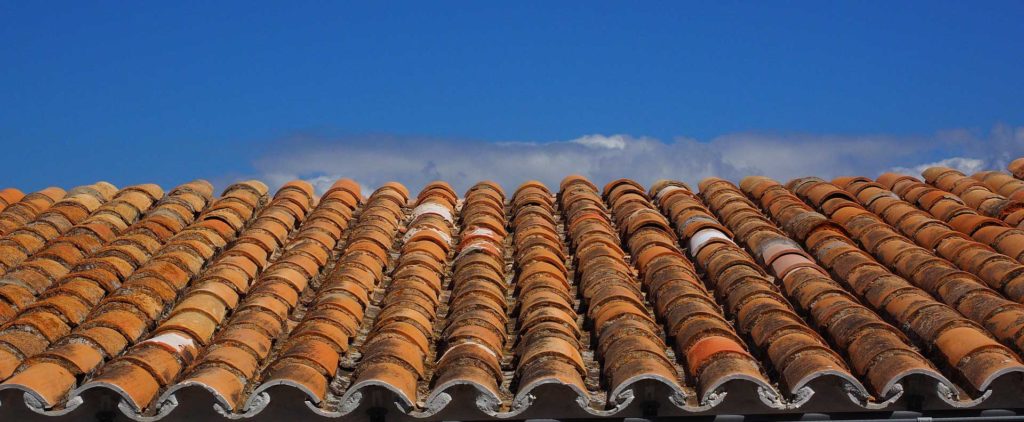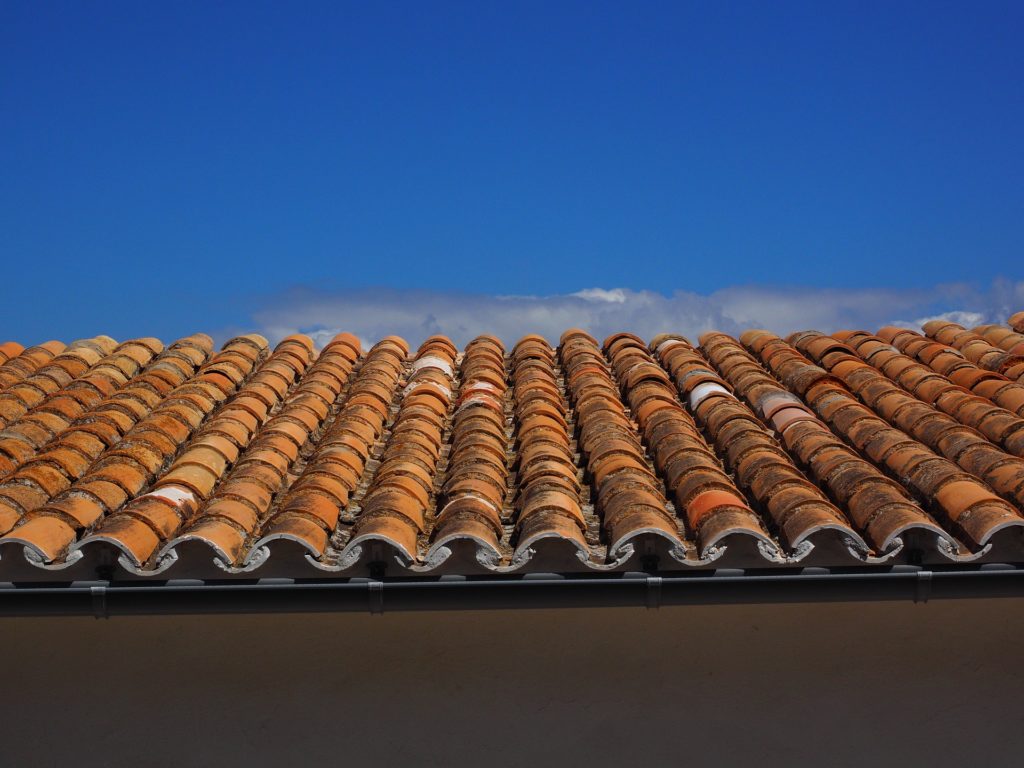Most modern tile roof systems on houses in the Tucson, AZ area that were built in the last 30 years have some sort of flaw, and many have several flaws. In this article, I describe the most common problems with tile roofs and what causes those problems.
Tile roof flaws generally fall into two categories; technical and practical.
Two Types of Tile Roof Problems
Technical Flaws in Tile Roofs
A technical flaw is a flaw that is a deviation from best practices and the guidelines accepted by both the manufacturers and state and local regulatory agencies. The “technical flaw” does not necessarily lead to immediate leakage and can go undetected for several years, but will likely shorten the long term serviceability of the roof system. Common technical problems include:
- Headlap issues – where the tiles of the roof simply do not lap over each other enough
- Transition flashings issues – where transitions in the roof components are simply not flashed or are flashed in-adequately
Practical Flaws in Tile Roofs
Practical flaws, on the other hand, are serious flaws that result in immediate leakage or rapid deterioration of the roof. Left alone, these roof problems will result in the need for roof replacement, or at least large scale areas needing to be replaced.
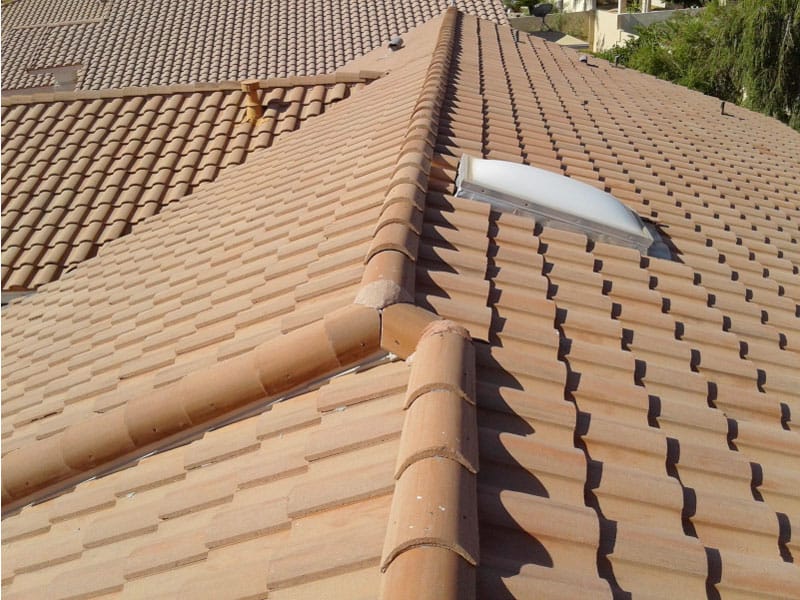
Tiles roofs are designed to flow water from tile to tile until it reaches the edge of the roof
A Tile Roof System is a Watershed
A true understanding of a tile roof system must begin with the understanding that a tile roof system is a watershed. Unlike a roof system that is appropriate for a flat or low sloped structure that is a water-tight membrane, a watershed is simply a system that carries water from one component to the next until the water flows off the roof and onto the ground.
As a watershed, the roof system is designed to flow from one tile to the next, following the slope of the roof until water is dispersed off the roof. This often involves water flowing over flashings, or a series of flashings, that surround roof penetrations and are shaped to carry water back onto tiles below the penetration. When these components are installed correctly the roof should not leak.
Underlayment is installed under the tile as the final backstop against leakage. The underlayment is lapped sheet-over-sheet and is another watershed designed to prevent any water that gets past the tiles and flashings from entering the house. Openings in the underlayment, either because it was installed incorrectly or deteriorated from age or excessive exposure to the elements, will result in leakage.
Underlayment Used in Tile Roofs
There are several types of underlayment being used under roofs these days. The traditional underlayment is #40 organic fibered, asphalt-impregnated paper, often installed two layers thick. This type of tile roof underlayment is installed starting at the bottom of the slope and lapped successively up the slope to the top.
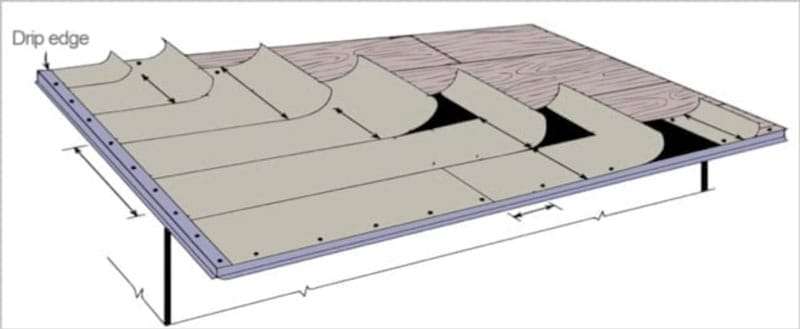
When properly installed, underlayment is installed starting at the bottom of the slope and lapped successively up the slope to the top.
There are also several newer types of underlayment materials and synthetic underlayments being developed and installed. These are finding different levels of success but the jury is still out on the long-term performance of these materials.
At Roofsavers Locke Roofing we choose to stay with the tried and true when it comes to underlayment materials. Over the last 35+ years in the roofing industry, I’ve found that most problems with the underlayment are installation problems, rather than flaws in the material itself. If the tile roof is installed correctly, there is no reason to pay the extra cost and take the extra risk of installing a material that has not yet proven itself over time.
Types of Roof Tile – Concrete & Clay
Roof tiles in the Tucson area, and most areas for that matter, fall mainly in two categories; concrete roof tiles and clay roof tiles. Both types of roof tiles perform well when installed correctly.
Generally speaking, the materials roofing tiles are made from are chosen for the look that you are trying to achieve. Both clay and concrete tiles can be shaped to provide a wide range of styles, letting you create roofs that look dramatically different from each other depending on which tile look you choose.
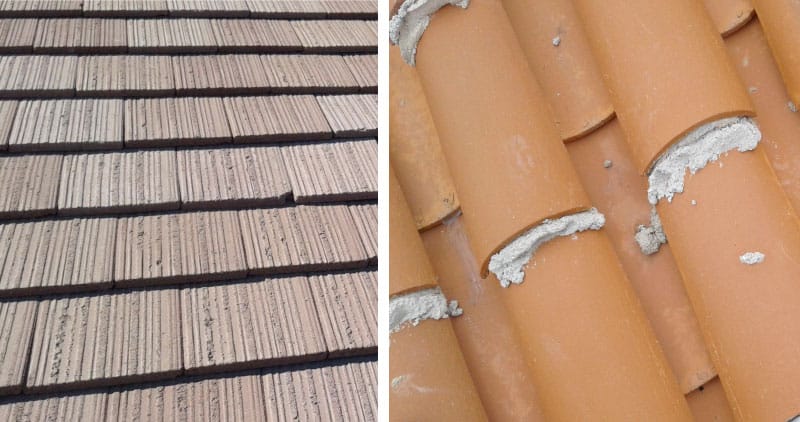
Concrete tiles (left) and clay tiles (right) provide radically different looks to the style of house or building you are installing them on.
Problems With Roof Tiles
The biggest complaint with roofing tiles is breakage. Tiles made of clay are generally more vulnerable to breakage, but some profiles of concrete tiles are also quite delicate.
Breakage occurs for a number of reasons.
- Foot traffic – While walking on a tile roof can certainly break the more vulnerable tiles, many tiles are quite walkable.
- Temperature fluctuations – When there has been no foot traffic and no outside causes like tree branches falling or stones thrown by kids, it can sometimes appear that the tiles break on their own accord. And it’s true! The temperature swings from night to day can be dramatic here in Tucson. This purely environmental factor forces the tiles to expand and contract and will result in breakage.
- ‘Green’ (uncured) tiles – Many tiles are palletized and shipped “green” (before the concrete has fully cured). Handling the tile at this stage can create faults in the tile that the original installer cannot recognize. When these tiles are installed, they become particularly vulnerable to breakage from normal expansion and contraction.
Roof Flashings
Flashings are every bit as varied as tiles. There are flashings for pipes, vents, headwalls, sidewalls, valleys, and more. Their job is to carry water around penetrations and back onto the tiles below. The photo below shows how this is done.
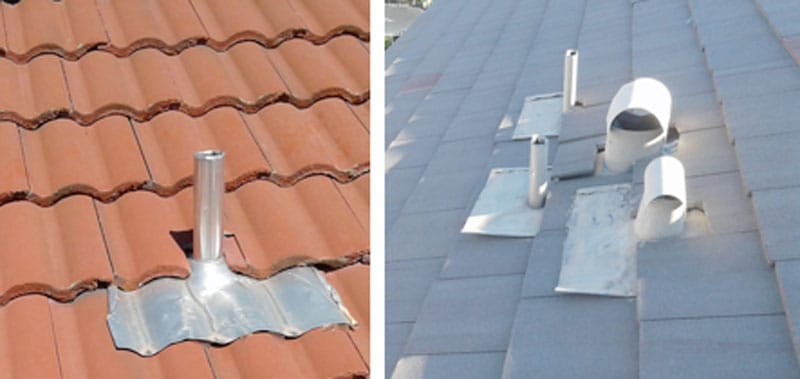
When metal flashings are properly installed, the roof tiles are first cut to allow the penetration (e.g., vent or pipe) to go through the roof. The flashing is then installed under the tile surrounding the penetration and on top of the tile below it.
The flashing generally uses gravity to carry water down the roof and typically no seals are necessary.
Problems With Roof Flashings
The photos below were taken on a roof where the flashings were leaking.
The photo on the left shows the obvious point of water entry. The near flashing was the wrong size for the pipe it was to flash, so the installer simply hammered it in to close it tight to the pipe. It is also the wrong flashing for a pipe of this type. Note how the pipe flashings above travel all the way up to the top of the pipe and is tucked into the pipe itself. This causes any rainwater to flow onto the roof or into the pipe. As these are both sewer breather pipes, any water going into the pipe will enter the sewer system.
The vent seen in the photo on the right shows another improper flashing. Note how the tiles above the vent cover the top of the flashing but the flashing does not extend over the top of the tiles below. This allows any water that comes in contact with the flashing to dump under the tiles and onto the underlayment. Left alone, the underlayment will age prematurely and eventually need to be replaced.
Improperly installed flashings are the primary cause of leaking tile roofs.
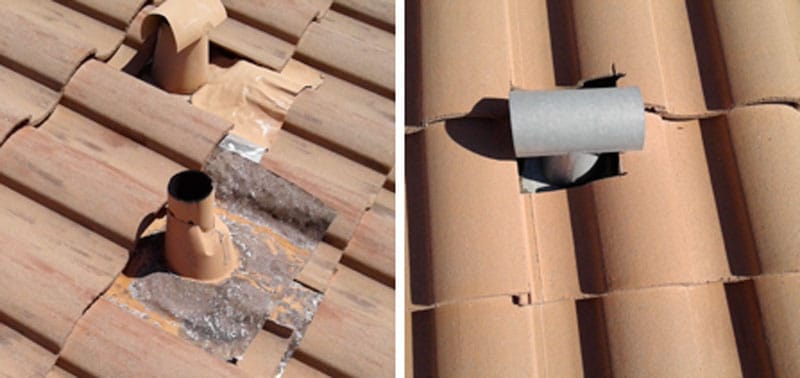
In Summary
As you can see, a tile roof is a complicated system of watershed components that all must act in concert to keep the dwelling watertight. It’s not really hard to do correctly, but I have built a business correcting defects installed by past roofers. It’s better to be sure the job is done right the first time!

